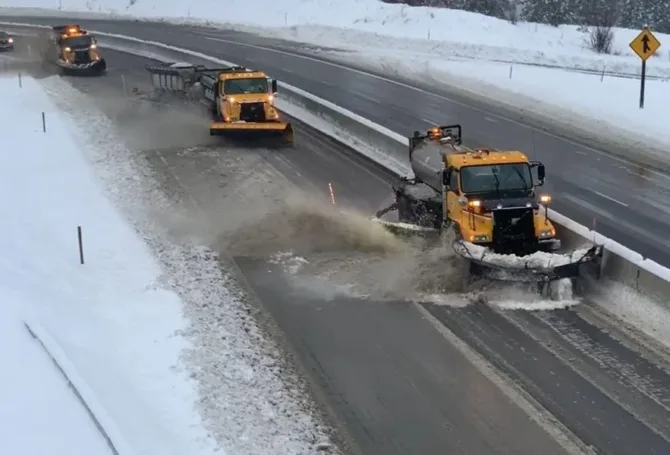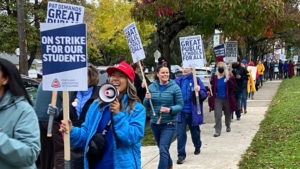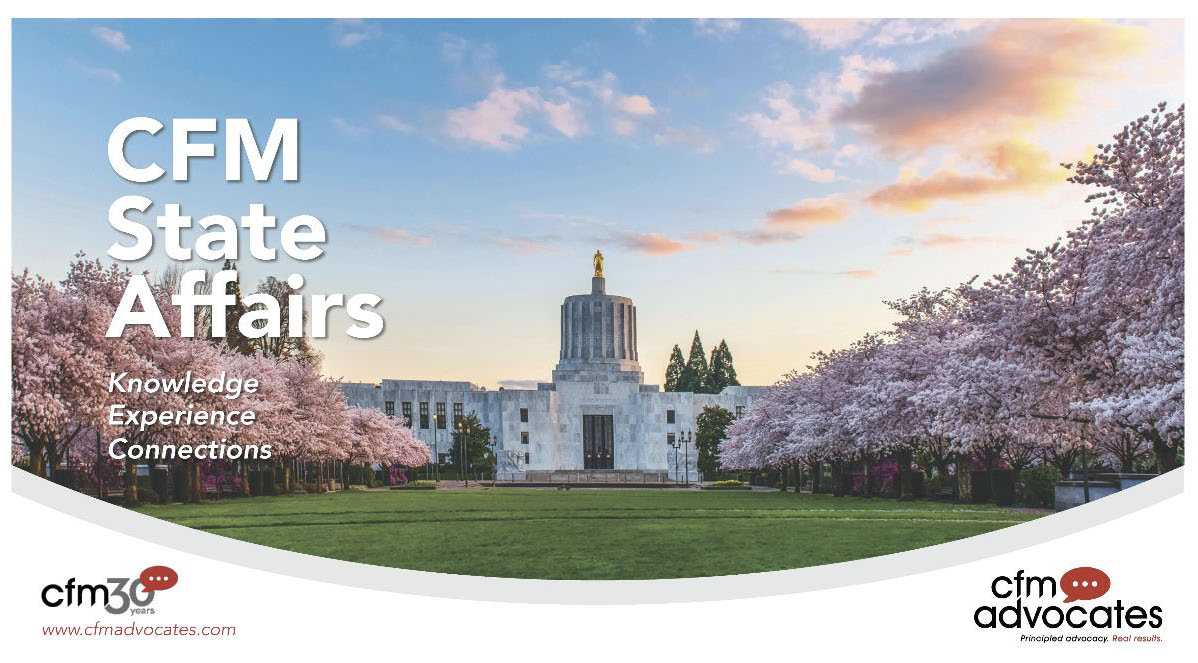
Lawmakers Look at Housing, Addiction Treatment and Snow Plowing Funding
 With the 2024 short legislative session approaching, Oregon lawmakers received an early Christmas bonus as the latest revenue forecast predicts an additional $335 million this biennium. The line is already forming with wish lists.
With the 2024 short legislative session approaching, Oregon lawmakers received an early Christmas bonus as the latest revenue forecast predicts an additional $335 million this biennium. The line is already forming with wish lists.
Lawmakers in both parties have signaled an interest in boosting funding for housing, addiction treatment and plowing winter snow. The prolonged teacher strike in Portland and stalemated negotiations in other school districts have raised the possibility of supplemental funding for K-12 education.
Governor Kotek will seek $14 million from the 2024 session to establish more homeless shelters statewide and beef up the Department of Transportation budget so it can plow roads, paint fog lines and clean up graffiti.
There is momentum to ramp up detox and addiction treatment services amid a growing push to reverse Measure 110 and recriminalize possession of small amounts of illicit drugs. Dr. Sejal Hathi, the newly appointed director of the Oregon Health Authority who is tasked with organizing addiction treatment services, arrives in Salem in January just before the legislature convenes. One of her early challenges will be trying to assess what services exist, how to convert them into a system and where to find enough behavioral health professionals to provide needed services.
House Speaker Dan Rayfield, who will step down after the 2024 session to run for attorney general, said more revenue is welcome, but urged his colleagues to remain “measured in our commitments given that the long-term forecast anticipates that population and migration rates will level out.” In other words, don’t count on the good times to continue indefinitely.
New House Republican Leader Jeff Helfrich, bemoaning the “drugs and crime Oregon is rapidly becoming known for”, said, “During the upcoming short session, the House Republican Caucus will support legislation to make our state a safer, more affordable place to live and do business.”
 More School Funding
More School Funding
Lawmakers have been firm in opposing any bailout of school districts facing tense negotiations with teacher unions, pointing to the historic spending levels for K-12 schools they approved in the 2023 session. School officials say the amount approved by the legislature was enough to sustain current service levels but not enough to accommodate cost-of-living increases and other demands sought by teachers.
Teachers in the Portland Public School District, the state’s largest, have been on strike since November 1. Even if a settlement is reached, classroom instruction wouldn’t resume until Monday, November 27 because of the Thanksgiving break.
Seventy Oregon school districts, including Salem-Keizer and Medford, are also engaged in bargaining with teachers. Beaverton, Hillsboro, Lake Oswego, Reynolds, West Linn-Wilsonville and Gresham-Barlow have two- or three-year teacher contracts in place through June 2024.
The way Oregon’s school funding and equalization formula work makes it difficult for lawmakers to direct funds to a specific district. Some of the issues in Portland’s teacher negotiations could be addressed by funds from the City of Portland (better heating and colling systems) and Multnomah County (aid for children from homeless families and increased support for social services and mental health). The City and County stepped up in previous stalemated negotiations with targeted funding.
West Coast teacher strikes have occurred in the last two years in Los Angeles, Fresno, Oakland, Sacramento, Seattle and two school districts in Clark County. Many of the strikes lasted only a few days. Medford teachers struck in 2014 and remained on picket lines for 16 days. Issues have centered on wages, class sizes, working conditions and support staff.
The Portland teacher strike has prompted legislative proposals to establish a statewide teacher salary schedule and a teacher walkout ban.
 Negative Population Growth
Negative Population Growth
The good news about increased revenues was counter-balanced by Oregon’s negative population growth. State economists say Census data shows more Oregonians moved out of state than people moving in.
There Is a demographic exception with a slight net increase in the 18-24 year old cohort coming to Oregon, but that hasn’t reversed the state’s declining birth rate.
Another sign of exodus is declining school enrollments. Since the 2018-2019 school year, enrollment in Portland Public School has declined more than 17 percent or roughly 4,300 students. Officials believe some of those students enrolled in private or other public school districts.
Declining population, according to state economists, could lead to declining income tax revenues and a shrunken pool of workers for businesses to hire. The outflow of families might lessen the demand for housing but not enough to make up for the chronic underproduction of housing that has driven up home prices and rents.




